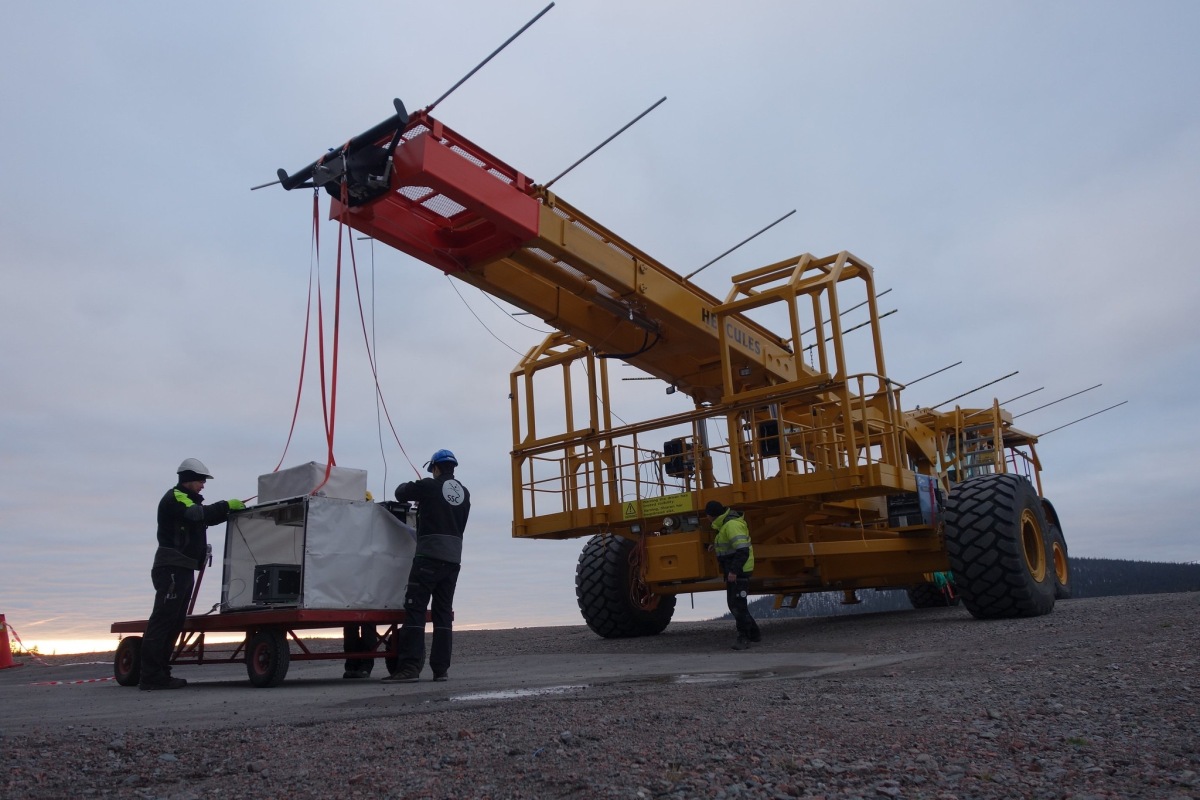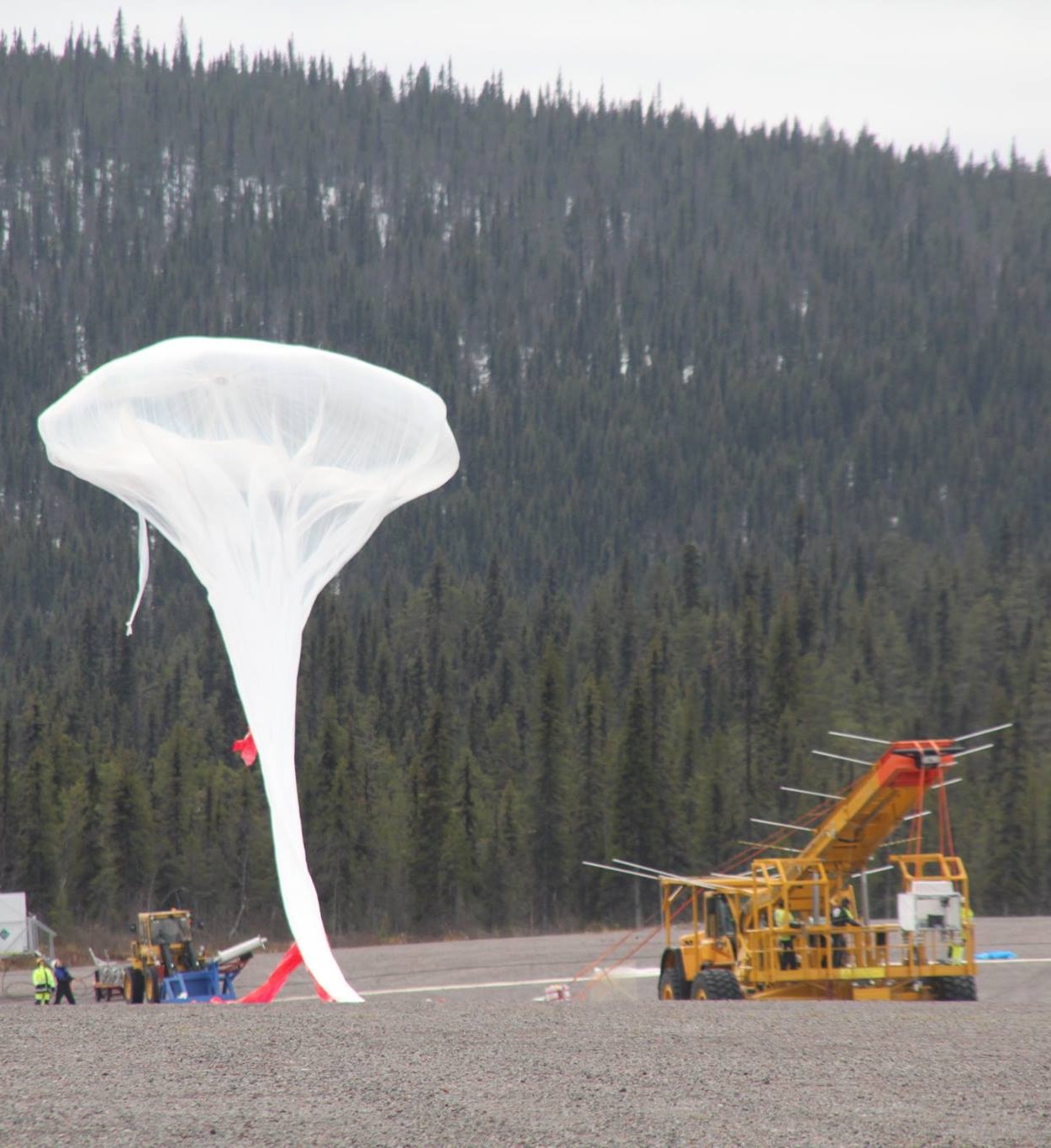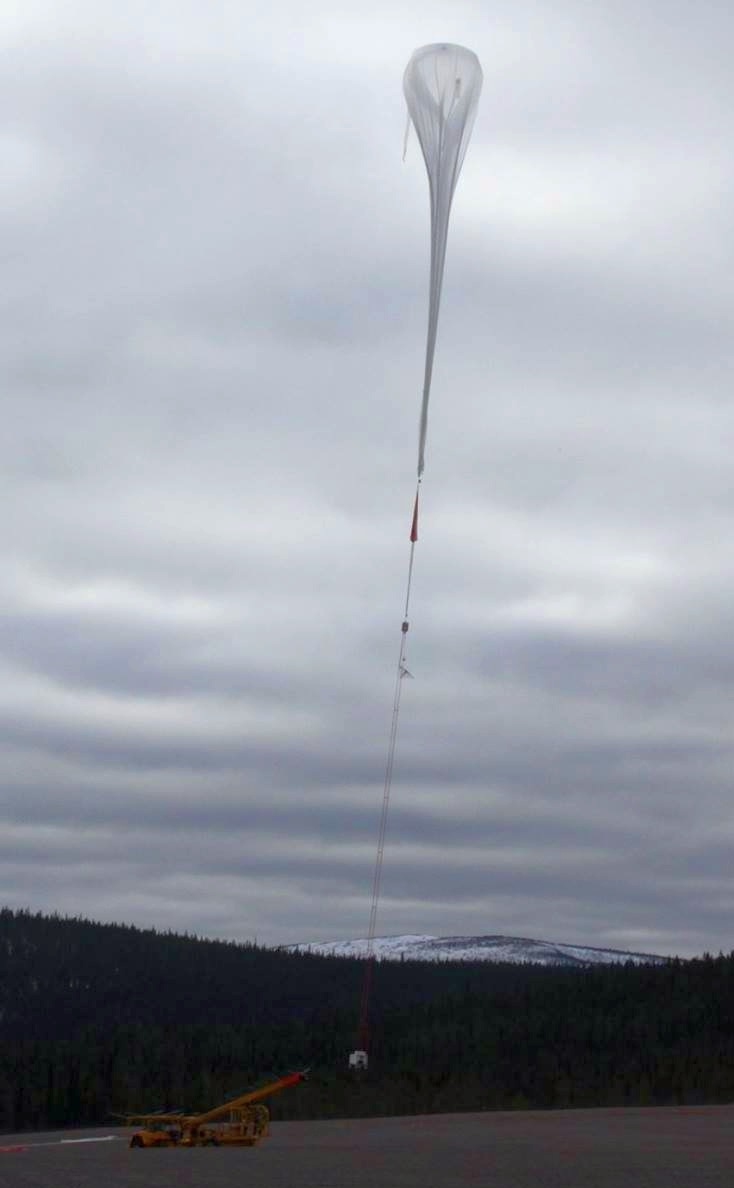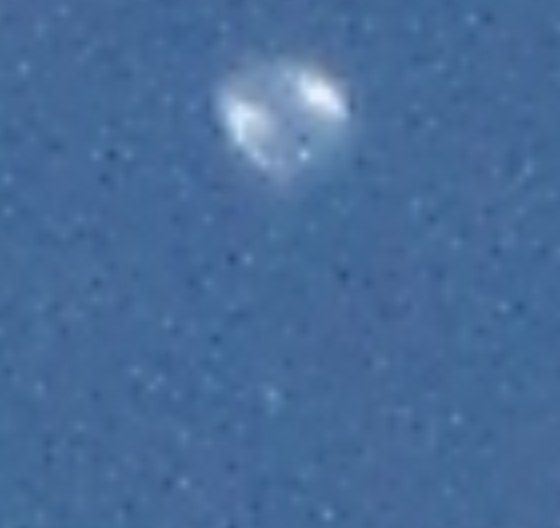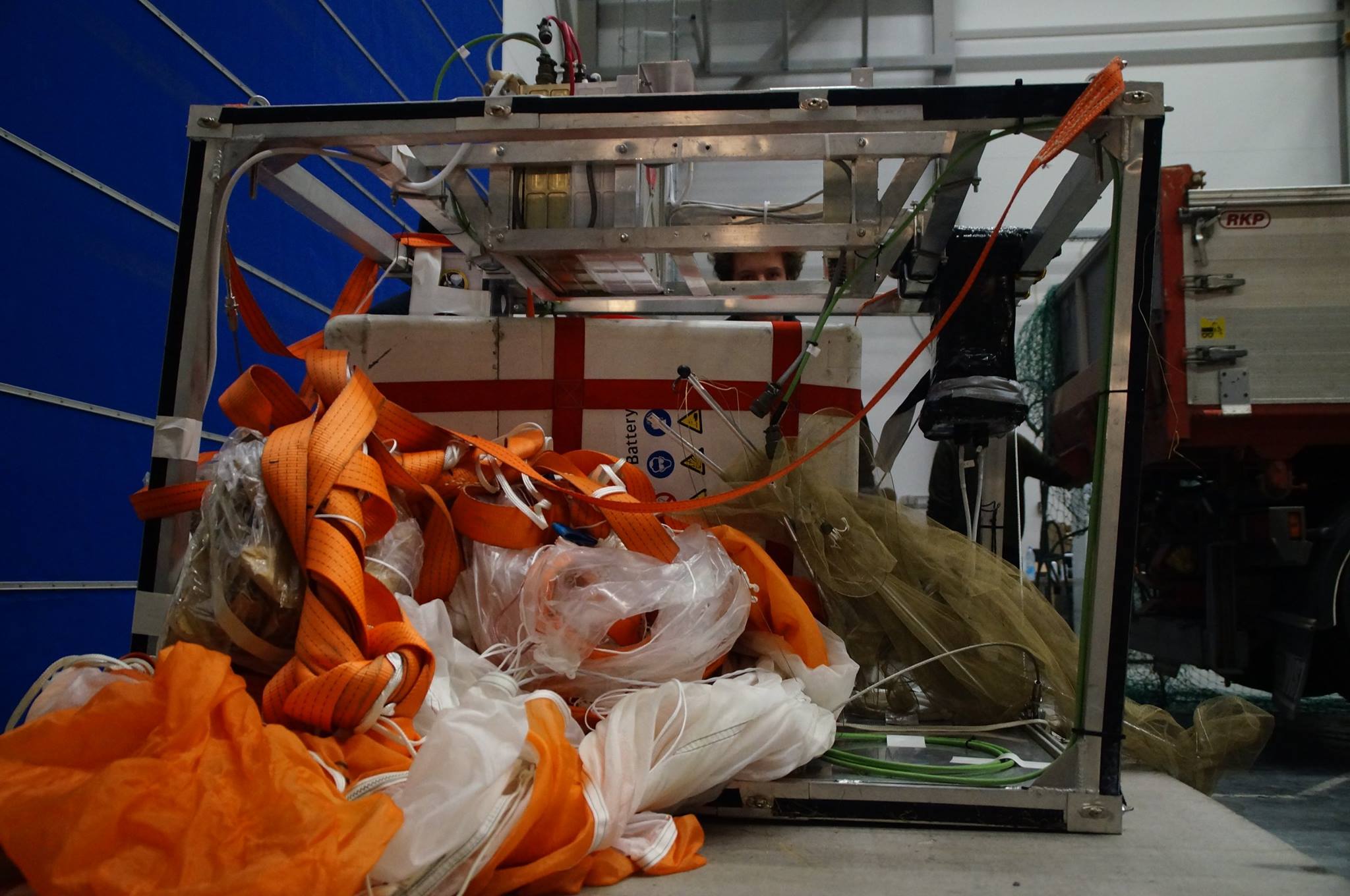Purpose of the flight and payload description
BEXUS which stands for Balloon Experiments for University Students is a project part of the REXUS/BEXUs initiative that allows students from universities and higher education colleges across Europe and more recently also Canada to carry out scientific and technological experiments on stratospheric research balloons. The basic idea behind BEXUS is to provide an experimental space platform for students in different areas of interest such as atmospheric research, fluid physics, magnetic field, materials science, radiations physics, astrophysics, biology and also to serve as a platform for new technology demonstrations.
Each year, two balloons are launched from the European Space Range (ESRANGE) base near Kiruna, Sweden each carrying several experiments assembled on a medium-sized gondola (1.16 m x 1.16 m x 0.84 m). The total lifted-mass is approximately 300kg on each flight. With each payload weighing between 30 and 112 kg that means that 4 student experiments can be accomodated per gondola.
The first five flights of the program were carried out under sponsorship of the Swedish Space Corporation that offered available space on yearly technological flights carried out at ESRANGE. Since 2008, BEXUS is realised under a bilateral Agency Agreement between the German Aerospace Center (DLR) and the Swedish National Space Agency (SNSA). The Swedish share of the payload is made available to students from other European countries through a collaboration with the European Space Agency (ESA). EuroLaunch, a cooperation between ESRANGE and the Mobile Rocket Base (MORABA) of DLR, is the organism responsible for the campaign management and operations of the launch vehicles.
On each cycle of the initiative, experts from DLR, SSC, ZARM (Center of Applied Space Technology and Microgravity, University of Bremen) and ESA provide technical support to the student teams throughout the project. It begins with a Call for Proposals, followed by a condensed space project lifecycle, including typical design phases and reviews, culminating in the launch of the experiments and publication of the final reports.
Video footage of the launch
Details of the balloon flight
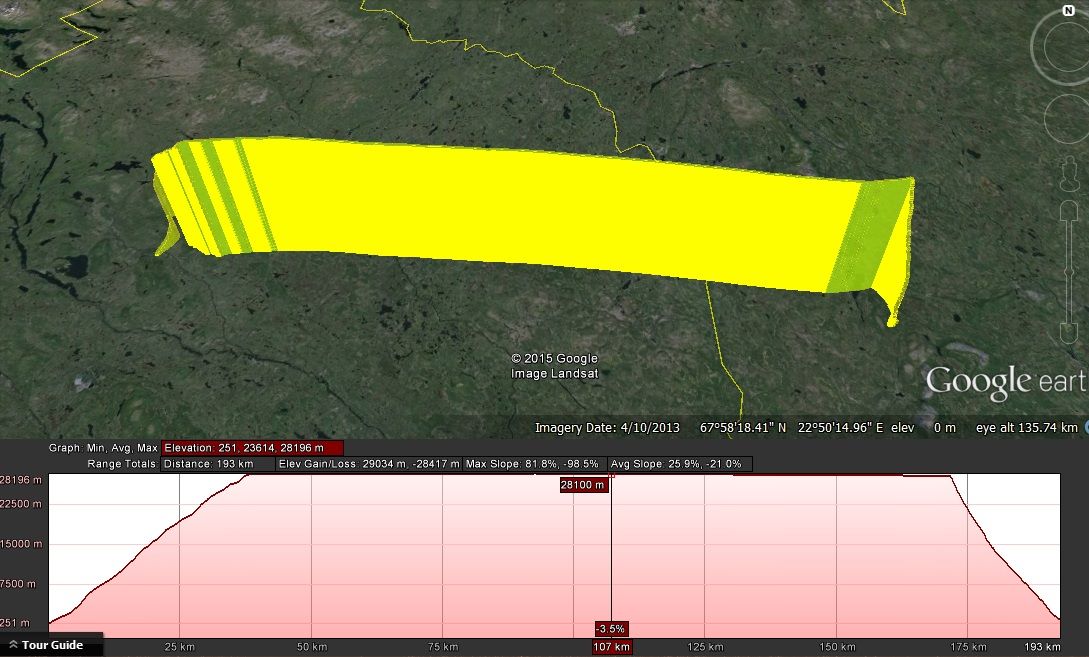
Balloon launched on: 10/10/2015 at 9:17 utc
Launch site: European Space Range, Kiruna, Sweden
Balloon launched by: Swedish Space Corporation (SSC)
Balloon manufacturer/size/composition: Zero Pressure Balloon 12.000 m3
End of flight (L for landing time, W for last contact, otherwise termination time): 10/10/2015 at 13:06 utc
Balloon flight duration (F: time at float only, otherwise total flight time in d:days / h:hours or m:minutes - ): 3 h 49 m
Landing site: In Finland, 25 km E of the Swedish border.
Campaign: BEXUS
The experiments that were part of Bexus 20 flight were:
HACORD (High Altitude Codmic Ray Detector) designed to measure the flux and angular distribution of cosmic rays at different altitudes. The detector consisted of four Geiger-Müller tubes set up in a formation that allows us to measure this angular distribution. Developed by students from University of Antwerp, Belgium
COSPA (Collection Of Stratospheric aerosol PArticles for a better understanding of the development of Polar Stratospheric Clouds) while aimed to collect stratospheric particles, the COSPA team of TU Darmstadt, from Germany was intending to apply a multi-MINI impactor device on a balloon flight. The multi-MINI device contained 12 impactors with two stages each with cut offs of 500 and 10 nm respectively.
CPT-SCOPE (Cosmic Particle Telescope) an instrument that used a novel radiation-hard integrated circuit technology and standard semiconductor detectors to study energetic sub-atomic particles such as electrons and protons in the stratosphere. It was a cooperative development between students from Norwegian University of Science and Technology, Freie Universität Berlin, Technische Universität Berlin and Beuth Hochschule für Technik Berlin, the three from Germany.
External references
- BEXUS website
- List of balloons launched from ESRANGE SSC Space website (via Archive.Org)
13020If you consider this website interesting or useful, you can help me to keep it up and running with a small donation to cover the operational costs. Just the equivalent of the price of a cup of coffee helps a lot.

